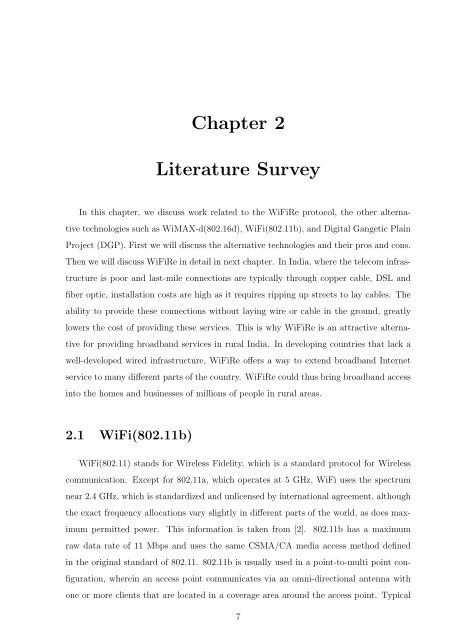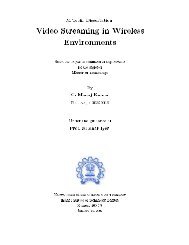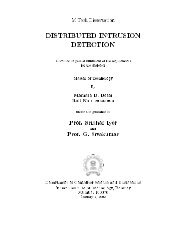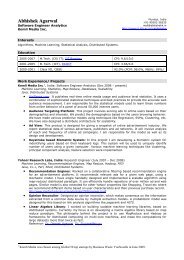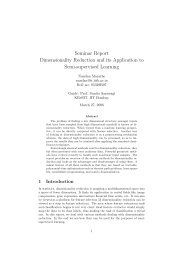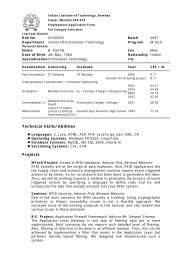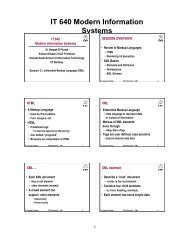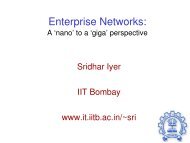Final Thesis - KReSIT - Indian Institute of Technology, Bombay
Final Thesis - KReSIT - Indian Institute of Technology, Bombay
Final Thesis - KReSIT - Indian Institute of Technology, Bombay
Create successful ePaper yourself
Turn your PDF publications into a flip-book with our unique Google optimized e-Paper software.
Chapter 2<br />
Literature Survey<br />
In this chapter, we discuss work related to the WiFiRe protocol, the other alternative<br />
technologies such as WiMAX-d(802.16d), WiFi(802.11b), and Digital Gangetic Plain<br />
Project (DGP). First we will discuss the alternative technologies and their pros and cons.<br />
Then we will discuss WiFiRe in detail in next chapter. In India, where the telecom infrastructure<br />
is poor and last-mile connections are typically through copper cable, DSL and<br />
fiber optic, installation costs are high as it requires ripping up streets to lay cables. The<br />
ability to provide these connections without laying wire or cable in the ground, greatly<br />
lowers the cost <strong>of</strong> providing these services. This is why WiFiRe is an attractive alternative<br />
for providing broadband services in rural India. In developing countries that lack a<br />
well-developed wired infrastructure, WiFiRe <strong>of</strong>fers a way to extend broadband Internet<br />
service to many different parts <strong>of</strong> the country. WiFiRe could thus bring broadband access<br />
into the homes and businesses <strong>of</strong> millions <strong>of</strong> people in rural areas.<br />
2.1 WiFi(802.11b)<br />
WiFi(802.11) stands for Wireless Fidelity, which is a standard protocol for Wireless<br />
communication. Except for 802.11a, which operates at 5 GHz, WiFi uses the spectrum<br />
near 2.4 GHz, which is standardized and unlicensed by international agreement, although<br />
the exact frequency allocations vary slightly in different parts <strong>of</strong> the world, as does maximum<br />
permitted power. This information is taken from [2]. 802.11b has a maximum<br />
raw data rate <strong>of</strong> 11 Mbps and uses the same CSMA/CA media access method defined<br />
in the original standard <strong>of</strong> 802.11. 802.11b is usually used in a point-to-multi point configuration,<br />
wherein an access point communicates via an omni-directional antenna with<br />
one or more clients that are located in a coverage area around the access point. Typical<br />
7


